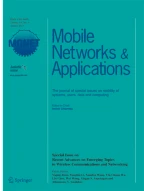Abstract
The brown planthopper (BPH) is a crucial pest of rice in tropical zones like the Mekong Delta of Vietnam. It economically causes severe loss to the rice harvest via direct nutritional depletion. Many studies address the BPH surveillance by using networks of wireless sensors that are mounted on light traps. However, these approaches have not been confirmed as effective deployment due to inoperative light traps’ locations. The problem is that the geographical area of towns is not identical, leading to unnecessary redundancy of sensors and light traps. Our aim in this article is to optimize the locations of BPH sensor networks by utilizing cellular automata and honeycomb architecture which have not been affected by the spatial characteristic geographically. The authors have made several contributions regarding the mentioned problem by (i) quantitatively proving that the deployment cost of BPH sensor networks is significantly reduced, and consequently (ii) optimizing the BPH sensor network. Therefore, the appropriate configuration of the network is maintained in any circumstances. The experiments have been performed on BPH surveillance networks in Hau Giang, a substantial rice province in the Mekong Delta of Vietnam.
Similar content being viewed by others
References
Platform ⋅ gama. https://gama-platform.github.io/
Ali H, Sajjad A (2019) On further results of hex derived networks. Open J Discret Appl Math 2(1):32–40
Awad A, Pang W, Lusseau D, Coghill GM (2019) A hexagonal cell automaton model to imitate physarum polycephalum competitive behaviour. In: The 2018 conference on artificial life: a hybrid of the european conference on artificial life (ECAL) and the international conference on the synthesis and simulation of living systems (ALIFE). MIT Press, pp 203–210
Bays C (2018) Cellular automata in triangular, pentagonal, and hexagonal tessellations. Cellular automata: a volume in the encyclopedia of complexity and systems science, Second Edition pp 1–10
Erman AT, Dilo A, Havinga P (2012) A virtual infrastructure based on honeycomb tessellation for data dissemination in multi-sink mobile wireless sensor networks. EURASIP J Wirel Commun Netw 2012(1):17
Huong LH (2015) Mo hinh do thi dua tren cau truc ball tree (in english: Graph model based on ball tree structure). Master’s thesis, Can Tho University, 3/2 street, Can Tho City, Vietnam
Huong LH, Thanh NH, Hiep HX (2016) Cai thien toc do tim kiem cua mo hinh do thi bt-graph dua tren nen tang cuda (in english: Improving the search speed of the bt-graph model based on the cuda platform). Proceeding of Publishing House for Science and Technology
Imran M, Baig AQ, Ali H (2016) On molecular topological properties of hex-derived networks. J Chemom 30(3):121–129
Lam BH, Huynh HX, Traoré M., Lucas PY, Pottier B (2014) Monitoring environmental factors in mekong delta of Vietnam using wireless sensor network approach. In: 8th international conference on simulation and modelling in the food and bio-industry foodsim, pp 71–78
Lam HB, Phan TT, Vuong LH, Huynh HX, Pottier B (2013) Designing a brown planthoppers surveillance network based on wireless sensor network approach. International conference on information systems for crisis response and management
Luong HH, Nguyen TH, Huynh HH, Huynh HX (2016) Design and optimization of the automatic brown planthopper (bph) light trap surveillance network. EAI Endorsed Trans Context-aware Syst & Appl 3(9):e4
Nowinszky L, et al. (2003) The handbook of light trapping. Savaria University Press, Szombathely
Pottier B, Lucas PY (2014) Dynamic networks netgen: objectives, installation, use, and programming. Université de Bretagne Occidentale
Sahin U, Uguz S, Akın H, Siap I (2015) Three-state von neumann cellular automata and pattern generation. Applied Mathematical Modelling 39(7):2003–2024
Simonraj F, George A (2012) Embedding of poly honeycomb networks and the metric dimension of star of david network. International Journal on Applications of Graph Theory in Wireless Ad Hoc Networks and Sensor Networks 4(4):11
de Sousa L, Gibson M, Chen A, Savić D, Leitão J (2016) Hexagonal cellular automata for flood modelling. In: Proceedings of the second international symposium on cellular automata modeling for urban and spatial systems
Tan Y, Sun JY, Zhang B, Chen M, Liu Y, Liu XD (2019) Sensitivity of a ratio vegetation index derived from hyperspectral remote sensing to the brown planthopper stress on rice plants. Sensors 19(2):375
Wolfram S (2018) Cellular automata and complexity: collected papers. CRC Press, Boca Raton
Zaitsev DA (2017) A generalized neighborhood for cellular automata. Theor Comput Sci 666:21–35
Author information
Authors and Affiliations
Corresponding author
Additional information
Publisher’s Note
Springer Nature remains neutral with regard to jurisdictional claims in published maps and institutional affiliations.
Rights and permissions
About this article
Cite this article
Huynh, H.X., Dang, H.Q., Luong, H.H. et al. BPH Sensor Network Optimization Based on Cellular Automata and Honeycomb Structure. Mobile Netw Appl 25, 1140–1150 (2020). https://doi.org/10.1007/s11036-019-01434-0
Published:
Issue Date:
DOI: https://doi.org/10.1007/s11036-019-01434-0
